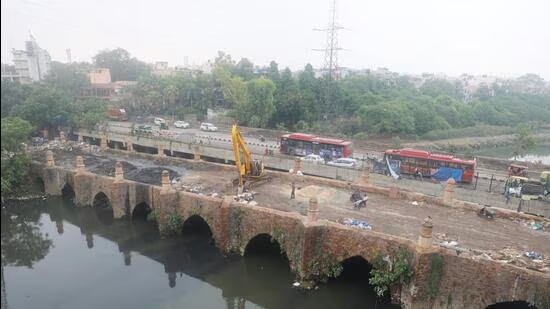
Bara Pulah Bridge
Nearest - Air Port IGI Airport Nearest - Railway Station Nizamuddin Railway Station Nearest Metro Station - Nizamuddin The Barapullah Bridge is located in Delhi, India, near Humayun's Tomb and Khan-i-Khana's Tomb. It's a 200-meter-long Mughal-era bridge that's hidden beneath the modern Barapullah flyover
The Barapullah Bridge, built nearly 400 years ago, holds a unique historical significance as one of the most beautiful and functional Mughal-era structures in Delhi. It was constructed under the rule of Emperor Jahangir and was commissioned by Mihr Banu Agha, an influential noblewoman of the time. The bridge served as a strategic and ceremonial route, allowing the Mughals to cross the Yamuna River and access sacred and royal sites, such as the Nizamuddin Dargah and Humayun's Tomb, especially on journeys from Agra. By 1628, the approach road between the bridge and Humayun's Tomb was a beautifully maintained, wide tree-lined path, adding to the bridge’s charm and reputation as a scenic landmark. However, over the years, the bridge fell into neglect, accumulating silt and debris, and was no longer used as it once was. In August 2024, the Archaeological Survey of India (ASI) initiated a significant restoration project to revive this historic bridge. This effort includes removing years of accumulated silt and waste and restoring the bridge as a pedestrian pathway. The restoration aims to preserve its architectural integrity while making it accessible to visitors, allowing them to appreciate the Mughal-era craftsmanship and understand its historical importance in Delhi’s landscape.

